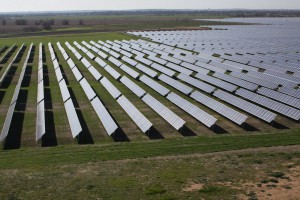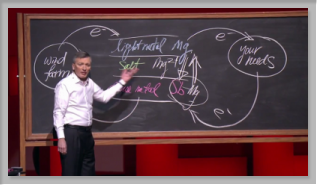Georgia Power’s parent Southern Company (SO) is bragging about selling a 100 MW biomass plant to Austin Energy. Funny how SO’s press release doesn’t mention Austin Energy’s buyer’s remorse. Let’s see why Austin Energy should regret buying biomass.
SO PR 18 July 2012, Southern Company brings nation’s largest biomass power plant on line: Nacogdoches facility contributes to Austin Energy renewables goal
Southern Company SO announced today that the nation’s largest
biomass plant is putting electricity on the grid in Texas. Southern Company President, Chairman and CEO Thomas A. Fanning joined state and local dignitaries today at the company’s Nacogdoches Generating Facility to mark commercial operation for the 100-megawatt unit.
Austin Energy is receiving energy from the plant through a 20-year power purchase agreement.
The PR goes on about local jobs and taxes, which could have been produced through building solar or wind generation. How much did that biomass plant cost Austin Energy? Funny how that’s not in the PR!
The City of Austin owns Austin Energy, and the Mayor and City Council are its Board of Directors. Vicky Garza wrote for the Austin Business Journal 20 July 2012, Austin Energy’s buyers remorse for biomass,
Austin City Council Member Mike Martinez wouldn’t mind a do-over on the $2.3 billion, 20-year energy contract the council approved in 2008.
The contract calls for Austin Energy to buy the entire output from the Nacogdoches Generating Facility, a 100-megawatt wood-waste-fueled biomass power plant.
“When the contract was initially brought to Council, it appeared to be a good deal to help us reach our adopted goals for renewables,” Martinez said.
It seemed like a good idea at the time.
$2.3 billion for 100 MW is about $23 per Watt. How does that compare to the 30 MW Webberville solar farm Austin Energy opened this year?
 The worst cost estimate I can find on that is $250 million. That’s about $8.33 per watt. Seems to me $23 is more than 2 and a half times greater than $8.33. Suppose you discount the solar plant by 2/3 because the sun doesn’t shine at night. It’s still almost as cheap to build solar as a biomass plant, and solar equipment costs have gone down with Moore’s Law since the Webberville plant was built. Plus a biomass plant needs to buy fuel, while a solar plant does not:
The worst cost estimate I can find on that is $250 million. That’s about $8.33 per watt. Seems to me $23 is more than 2 and a half times greater than $8.33. Suppose you discount the solar plant by 2/3 because the sun doesn’t shine at night. It’s still almost as cheap to build solar as a biomass plant, and solar equipment costs have gone down with Moore’s Law since the Webberville plant was built. Plus a biomass plant needs to buy fuel, while a solar plant does not:
Nacogdoches Power says that the plant will require 1 million tons of wood feedstock per year to operate.
Austin Energy’s original excuse for this bad business deal, by Mat McDermott for Treehugger and Austin Business Journal, 28 July 2008, Burning Biomass: Austin, Texas Plans 100 Megawatt Waste-to-Energy Plant,
Austin Energy COO Michael McCluskey says that while the firm is heavily invested in wind power, this move is intended to diversify its portfolio so as to address the problem of intermittency—the wind doesn’t always blow, causing wind farms to typically run at 30-40% of capacity. McCluskey says, though, that this biomass plant is expected to run at 95% capacity, generating “roughly three times the amount of energy each year that a 100 megawatt solar facility or 100 megawatt wind facility will produce.”
But at this point you could build a 300 MW solar facility for about the same price as that 100 MW biomass facility, and it would need no fuel.
Sure, there are still intermittency issues.  So we need to get on with a smart grid (which we need even with big baseload generating plants) and better storage. Not biomass.
So we need to get on with a smart grid (which we need even with big baseload generating plants) and better storage. Not biomass.
No wonder Austin Energy is having buyer’s remorse for that biomass plant. And Southern Company continues to make bad bets. No amount of biomass or even its tepid amounts of solar can greenwash SO’s bet-the-farm risk in its new nukes at Plant Vogtle.
-jsq
Short Link: